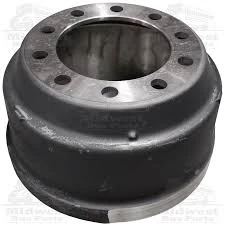
-
 Afrikaans
Afrikaans -
 Albanian
Albanian -
 Amharic
Amharic -
 Arabic
Arabic -
 Armenian
Armenian -
 Azerbaijani
Azerbaijani -
 Basque
Basque -
 Belarusian
Belarusian -
 Bengali
Bengali -
 Bosnian
Bosnian -
 Bulgarian
Bulgarian -
 Catalan
Catalan -
 Cebuano
Cebuano -
 Corsican
Corsican -
 Croatian
Croatian -
 Czech
Czech -
 Danish
Danish -
 Dutch
Dutch -
 ఆంగ్ల
ఆంగ్ల -
 Esperanto
Esperanto -
 Estonian
Estonian -
 Finnish
Finnish -
 French
French -
 Frisian
Frisian -
 Galician
Galician -
 Georgian
Georgian -
 German
German -
 Greek
Greek -
 Gujarati
Gujarati -
 Haitian Creole
Haitian Creole -
 hausa
hausa -
 hawaiian
hawaiian -
 Hebrew
Hebrew -
 Hindi
Hindi -
 Miao
Miao -
 Hungarian
Hungarian -
 Icelandic
Icelandic -
 igbo
igbo -
 Indonesian
Indonesian -
 irish
irish -
 Italian
Italian -
 Japanese
Japanese -
 Javanese
Javanese -
 Kannada
Kannada -
 kazakh
kazakh -
 Khmer
Khmer -
 Rwandese
Rwandese -
 Korean
Korean -
 Kurdish
Kurdish -
 Kyrgyz
Kyrgyz -
 Lao
Lao -
 Latin
Latin -
 Latvian
Latvian -
 Lithuanian
Lithuanian -
 Luxembourgish
Luxembourgish -
 Macedonian
Macedonian -
 Malgashi
Malgashi -
 Malay
Malay -
 Malayalam
Malayalam -
 Maltese
Maltese -
 Maori
Maori -
 Marathi
Marathi -
 Mongolian
Mongolian -
 Myanmar
Myanmar -
 Nepali
Nepali -
 Norwegian
Norwegian -
 Norwegian
Norwegian -
 Occitan
Occitan -
 Pashto
Pashto -
 Persian
Persian -
 Polish
Polish -
 Portuguese
Portuguese -
 Punjabi
Punjabi -
 Romanian
Romanian -
 Russian
Russian -
 Samoan
Samoan -
 Scottish Gaelic
Scottish Gaelic -
 Serbian
Serbian -
 Sesotho
Sesotho -
 Shona
Shona -
 Sindhi
Sindhi -
 Sinhala
Sinhala -
 Slovak
Slovak -
 Slovenian
Slovenian -
 Somali
Somali -
 Spanish
Spanish -
 Sundanese
Sundanese -
 Swahili
Swahili -
 Swedish
Swedish -
 Tagalog
Tagalog -
 Tajik
Tajik -
 Tamil
Tamil -
 Tatar
Tatar -
 Telugu
Telugu -
 Thai
Thai -
 Turkish
Turkish -
 Turkmen
Turkmen -
 Ukrainian
Ukrainian -
 Urdu
Urdu -
 Uighur
Uighur -
 Uzbek
Uzbek -
 Vietnamese
Vietnamese -
 Welsh
Welsh -
 Bantu
Bantu -
 Yiddish
Yiddish -
 Yoruba
Yoruba -
 Zulu
Zulu
ఫిబ్ర . 11, 2025 10:35
జాబితాకు తిరిగి వెళ్ళు
drum brake part names
Drum brakes, though less commonly discussed than their disc counterparts, play a critical role in the automotive world, especially for older vehicles and certain modern constructions. A deep dive into the components of drum brakes unveils a world of engineering expertise and precision. Understanding these components not only highlights the complexity involved in car manufacturing but also underscores the importance of maintenance and accuracy in automotive repair.
Additionally, the brake adjuster mechanism maintains the optimal distance between the brake drum and shoes. This self-adjusting feature ensures consistent brake performance by compensating for shoe wear over time. The design of this component requires a sophisticated understanding of mechanical systems to create an adjuster that operates smoothly without requiring frequent interventions. An often overlooked component is the backing plate. This metal plate serves as a foundation for mounting the various components inside the brake drum. It is meticulously designed to endure the challenging environments found within a wheel assembly, from exposure to road debris to constant vibration and temperature fluctuations. Balancing these factors requires authoritative knowledge in metallurgy and structural engineering. Finally, the parking brake lever is a critical component that interfaces directly with the brake shoes. It mechanically activates the brakes when the parking brake is engaged, ensuring vehicle stability when stationary. The design of this mechanism is a testament to the expertise required to balance mechanical leverage with human ergonomics. In conclusion, the drum brake system is a marvel of automotive engineering, relying on a complex interplay of parts each designed with precision and expertise. For those involved in the maintenance, design, or improvement of these systems, a thorough knowledge of each component's role, challenges, and materials is essential. Trusted professionals and authoritative technical experts continue to enhance these systems, ensuring that drum brakes, whether in vintage or current applications, remain safe, reliable, and efficient.


Additionally, the brake adjuster mechanism maintains the optimal distance between the brake drum and shoes. This self-adjusting feature ensures consistent brake performance by compensating for shoe wear over time. The design of this component requires a sophisticated understanding of mechanical systems to create an adjuster that operates smoothly without requiring frequent interventions. An often overlooked component is the backing plate. This metal plate serves as a foundation for mounting the various components inside the brake drum. It is meticulously designed to endure the challenging environments found within a wheel assembly, from exposure to road debris to constant vibration and temperature fluctuations. Balancing these factors requires authoritative knowledge in metallurgy and structural engineering. Finally, the parking brake lever is a critical component that interfaces directly with the brake shoes. It mechanically activates the brakes when the parking brake is engaged, ensuring vehicle stability when stationary. The design of this mechanism is a testament to the expertise required to balance mechanical leverage with human ergonomics. In conclusion, the drum brake system is a marvel of automotive engineering, relying on a complex interplay of parts each designed with precision and expertise. For those involved in the maintenance, design, or improvement of these systems, a thorough knowledge of each component's role, challenges, and materials is essential. Trusted professionals and authoritative technical experts continue to enhance these systems, ensuring that drum brakes, whether in vintage or current applications, remain safe, reliable, and efficient.
మునుపటి:
తరువాత:
తాజా వార్తలు
-
Why Choosing the Right Brake Drum Manufacturer Matters for Vehicle Safety and Performanceవార్తలుJun.05,2025
-
Understanding Heavy Duty Brake Drums: Key to Truck Safety and Performanceవార్తలుJun.05,2025
-
Reliable Braking Systems: Rear and Trailer Drum Brake Solutions for Heavy-Duty Applicationsవార్తలుJun.05,2025
-
Power and Precision: Why Brake Drums Still Dominate in Vehicle Safety Systemsవార్తలుJun.05,2025
-
Brake Drums: Essential Components for Vehicle Safety and Performanceవార్తలుJun.05,2025
-
Superior Brake Drums & Rotors for Reliable Stopping Powerవార్తలుJun.03,2025
-
Premium Brake Drums for Maximum Stopping Powerవార్తలుJun.03,2025
